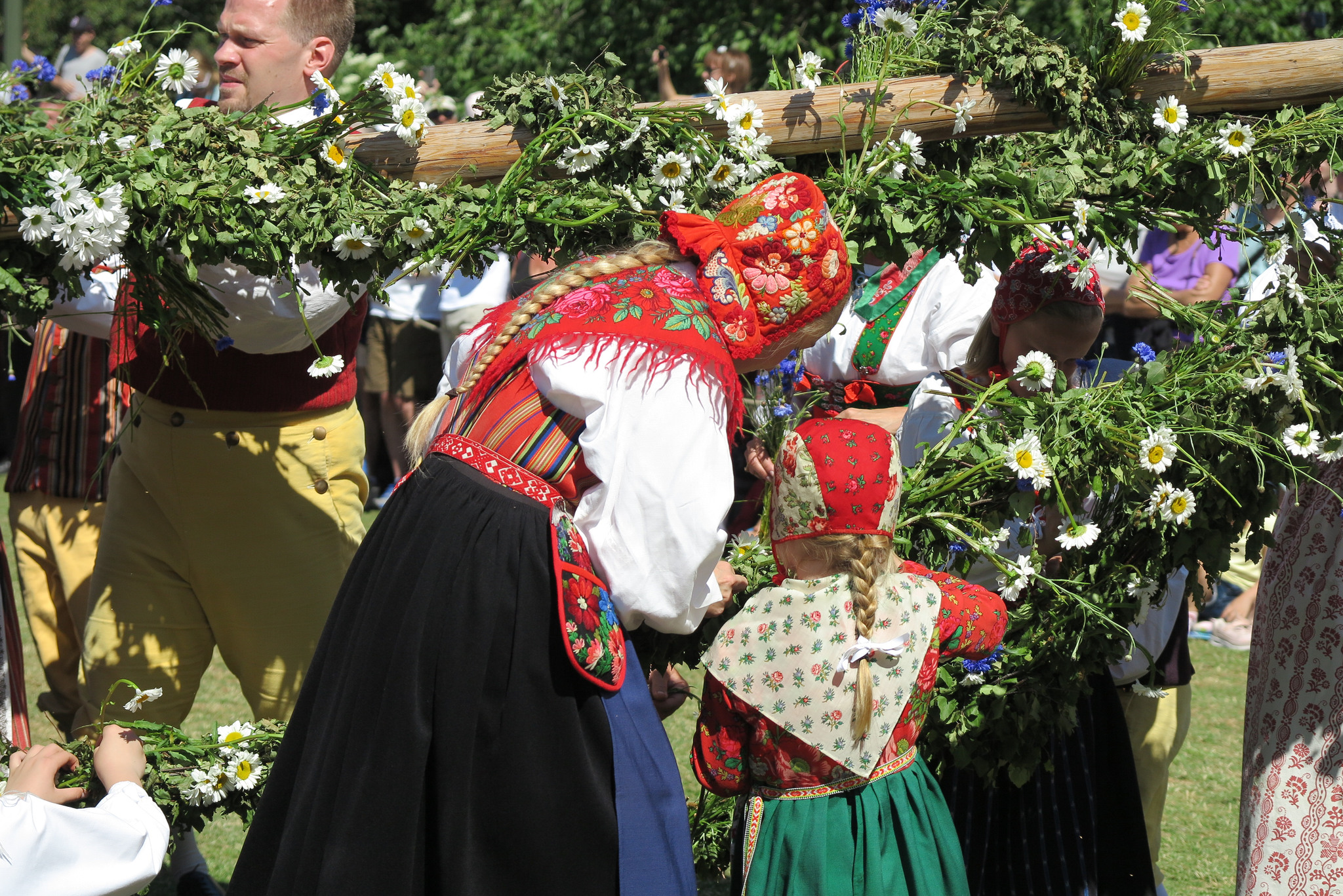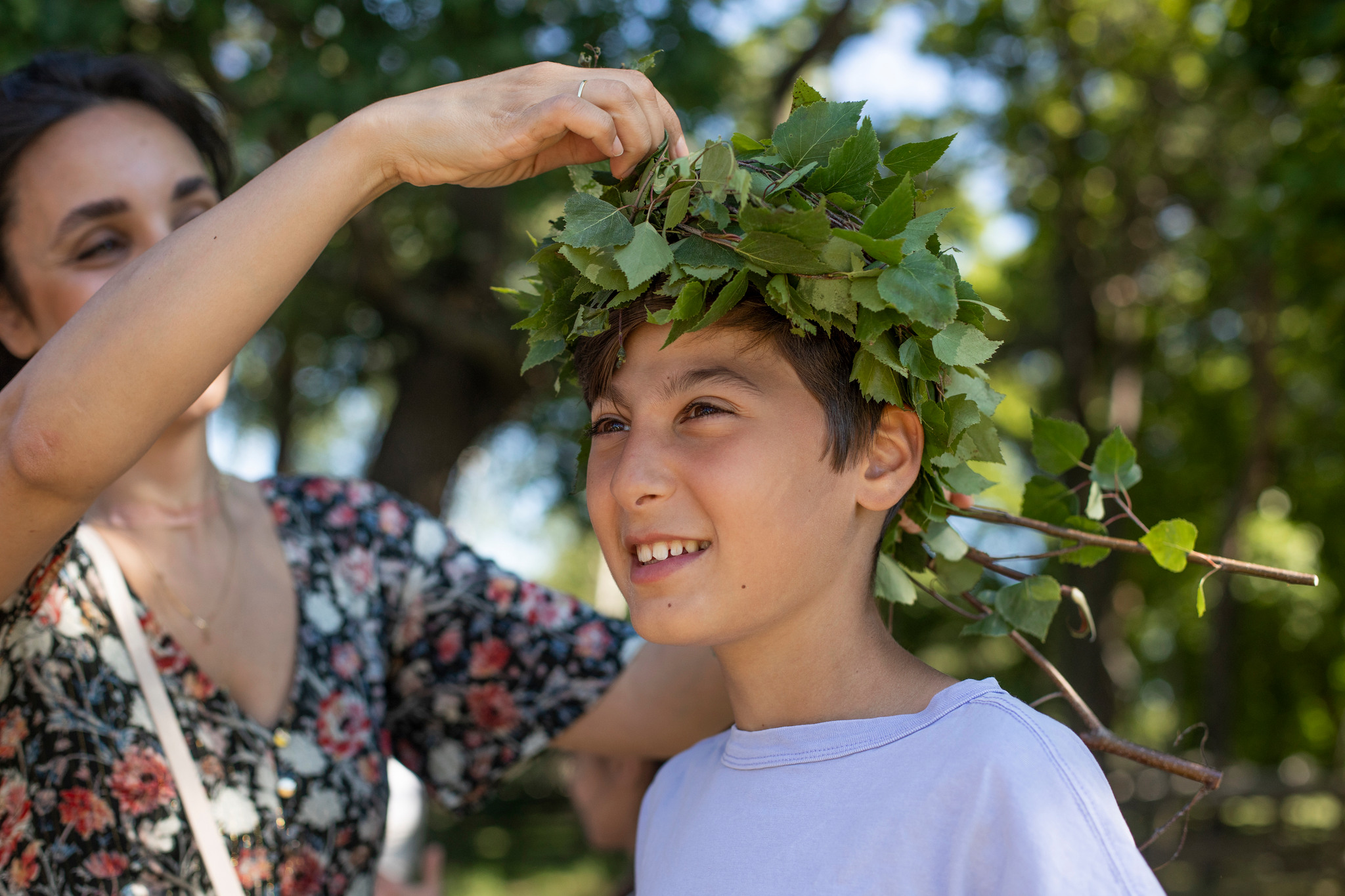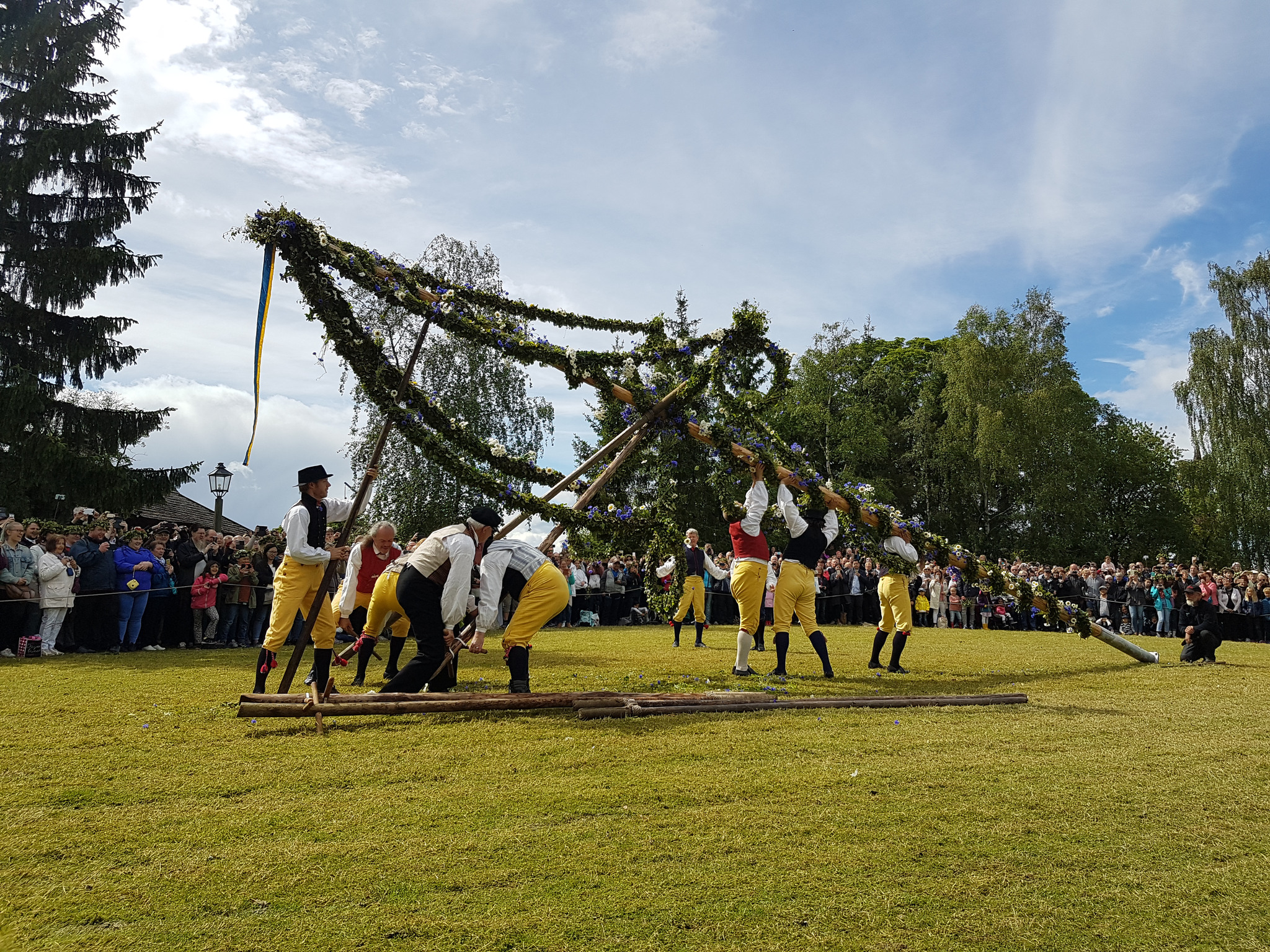- See and do
- Holidays and traditions
- Midsummer at Skansen
Midsummer at Skansen
Discover Stockholm’s greatest Midsummer celebrations! At Skansen, we’ve been celebrating Midsummer in the end of June since the 1890s. Alongside Christmas, this is one of Sweden’s most important holidays. Old and new traditions sit side-by-side: the maypole, folk music, traditional Swedish dances and putting flowers under your pillow.
-
Midsummer marks the summer solstice, when the sun is at its highest in the sky. What we celebrate each year at the end of June is thus the summer itself. For many people, Midsummer is also associated with dancing, music, spending time with friends and family, eating strawberry cake and enjoying the warm, bright summer night and its mystery.
Several of our Midsummer customs date back hundreds of years, and have become almost synonymous to the rest of the world with the image of Sweden and the Swedish summer. The significance of Midsummer has its roots in both folklore and Christianity, but there is clearly something magical about this celebration of love that continues to captivate us.
A festival with many different influences
As with many holidays, no one really knows how long Midsummer has been celebrated. For one thing, traditions change over time. It may also be the case that the origins of Midsummer celebrations go back so far that they have always been a feature of the people living in what is now modern-day Sweden.
But there are no reliable sources to tell us whether or not pre-Christian celebrations actually took place. Our prehistoric ancestors have left rock carvings depicting festive rituals and sun worship ceremonies. Nevertheless, it is unclear whether these were associated with the summer solstice.
During the fourth century, the Christian church began to observe St John the Baptist’s Day. This is because, according to the Gospel of St Luke, John was born six months before Jesus, and it was important to commemorate him because he is said to have urged people to do the right thing and baptised those who repented of their sins. The day therefore became a church holiday – the original Midsummer’s Day in Sweden from the 15th century onwards. Today, however, Midsummer’s Day is no longer part of the church calendar.

The Maypole is decorated

Midsummer wreath of birch leaves

The Maypole is raised at Tingsvallen
-
We now know that Midsummer has been celebrated in the Nordic countries since at least the Middle Ages, with traditions similar to today’s celebrations. Among farming communities, Midsummer was an important break in the working year and, according to folklore, Midsummer night had magical powers, with supernatural beings being particularly active.
The leaf-dressed Midsummer pole – the maypole – is said to have symbolised good sowing and growth among farmers. It probably came to Sweden via Germany, and early evidence that it was already an established symbol in the 17th century can be found in Erik Dahlberg’s Suecia Antiqua.
However, the green birch leaves themselves also had a function. In days gone by, leaves were laid in the fields at Midsummer to prevent the crops from being destroyed by storms. Today, alongside their use on the maypole, birch leaves are also a feature of Midsummer wreaths – usually together with meadow flowers.
One tradition that survives to this day in some places is predicting love by placing seven or nine types of flowers under your pillow. These are picked during the evening (in silence, in order not to break the spell), and it is said that on Midsummer’s night you will dream of your future spouse.
Midsummer as a Skansen tradition
At Skansen, Midsummer is celebrated every year with traditions from all around Sweden and various folk activities.
“Ever since the first year when Skansen was opened, Midsummer has been celebrated in the old, traditional way, by dressing the maypole and dancing around it, as well as folk dances by young people in folk costume on the dance floor. A Midsummer vigil has been held, filled with music, etc. In recent years, the public dance floors which had been arranged for the spring festivities have been allowed to remain over Midsummer, so that the many members of the general public who usually visit Skansen on these days have also had a Midsummer dance.” – from the book 25 Years of Skansen.